HP's Elite x3 was among the most anticipated Windows phones of 2016. With a large 5.96-inch QHD AMOLED display and a Snapdragon 820 chipset, fans of Microsoft's mobile platform finally felt like they had something to look forward to after the handset was announced in February at Mobile World Congress.
There's just one problem: the Elite x3 is aimed at businesses. Anyone can buy one, but you're not going to find consumer features on this device, such as the Pureview camera on a Lumia or the VR headset that comes with the Alcatel IDOL 4S.
HP calls it a 3-in-1, in that it's meant to serve as your one computing device, which can replace your phone, laptop, and desktop PC, and to test this, I used it as my only device for an entire week. As it turns out, it's definitely possible, but not optimal, but we'll come back to that.
Specs
| CPU | Quad-core Snapdragon 820, dual 2.15 GHz Kryo, dual 1.6 GHz Kryo |
|---|---|
| GPU | Adreno 530 |
| Display | 5.96", 1440p, 494ppi, AMOLED |
| Body | 161.8x83.5x7.8mm, 195g |
| Camera | 16MP, 4608x3456, Front 8 MP, 3872x2192 |
| Video | 4K - 30fps, Front 1080p - 30 fps |
| Aperture | f/2.2, Front f/2.2 |
| Camera features | PDAF (requires OTA update), 1.31um pixels, LED flash |
| RAM | 4GB |
| Storage | 64GB |
| Battery | 4150mAh |
| Certifications | IP67 dust- and water-resistant, MIL-STD-810 grade salt-, fog-, humidity-, transport shock-, and thermal shock-resistant |
| Price | $699, $799 bundled with Desk Dock |
Day one
Coming out of the box, the HP Elite x3 was a powerful and beautiful Windows phone, but it wasn't until I received a monitor from the company, as well as other peripherals that I got to see what it could do.
One thing that was clear was that this handset could be a suitable replacement for a Nokia Lumia 1520. It has the same type of feel with its large display, large keyboard, and, well, large everything. But as mentioned earlier, the camera won't be quite as good.
Continuum
The HP Elite x3 heavily focuses on Continuum, and it's definitely the best at it. The company compares Qualcomm's Snapdragon 820 chipset to an Intel Core i3, so it certainly has the power to run desktop-class applications.
But Windows 10 Mobile only runs on the ARM architecture, and the PC apps that you want to run likely require an x86 chip, such as an actual Core i3, rather than an ARM processor that's as powerful as one. HP has a solution though, and it's called Workspace.
Before we get into Workspace, it's important to note the other limitations of Continuum. It doesn't quite work like a PC just yet; for example, you can only use apps in fullscreen mode. Windowed apps are coming soon, as well as other features to make it more PC-like, but they're not available yet, even in Insider Preview form.
The device also has some cool and unique features for use with Continuum (other than Workspace). For example, an app called HP Display Tools will show an ambient display on the phone which offers the time. This is especially useful when the Continuum experience doesn't offer a clock on the screen like a standard Windows PC would.

Workspace
Workspace uses virtualization to stream the apps from the cloud. It's what I used while using the Elite x3 as my main PC for a week, as Neowin works best from the Chrome browser. I was given a selection of various sample apps to choose from, such as Chrome, Internet Explorer 11, and the full Office 2013 suite.
Of course, actual paying customers will be able to upload any application that they want. All you'll need to do is submit the installable package to HP, along with a license (sorry pirates) and you'll find it in your Workspace account.
One huge benefit that you'll get from using the service is windowed apps. Everything that you get to use is within the fullscreen Workspace app, so you have a virtualized environment with windows that you can resize however you want.
Unfortunately, the performance is far less than optimal. I was able to use it for a week, but it wasn't what I would call pleasant. There is noticeable lag; after all, you are streaming a PC here. I used a wired connection (50Mbps/25Mbps) the entire time.

There are also little bugs that become noticeable with time. For example, you can't copy and paste text from inside of Workspace to another UWP app, or vice versa. In fact, there were times when copying and pasting text couldn't be described as anything besides wonky.
Another annoyance was that scrolling with my mouse would become frustrating. When you click the wheel on your mouse, you expect the screen to scroll a certain amount, but with the HP Workspace, it would actually be normal in the morning, and then it would increase the amount that it scrolled as the day progressed, to the point where a single click would scroll by a page length.
And then there's the pricing. There are two plans, which cost $579- and $939-per-user-per-year, and they offer 40 and 80 hours of usage every month. This seems problematic, given an average 40 hour workweek would warrant about 160 hours of usage in a month.
Still, Workspace offers something that we haven't seen before, which is the ability to truly use your phone as your desktop PC. It works, even if it's not perfect just yet. In fact, using the Elite x3 was the first time that I realized the value in an x86 Windows phone, because using desktop apps was amazing, so wouldn't it be nice to be able to do it natively? In fact, Microsoft is reportedly working on just that.
Ultimately, if you're a consumer, you're not even considering Workspace, but if you're a business, it could be a viable option if you can find the right plan. Also, it's worth noting that this is a first generation service, and should get better with time.
It's clear that HP put a lot of thought into the Continuum experience on the Elite x3, with features such as Workspace and even Display Tools. The company certainly did everything that it could given the restrictions that Microsoft has placed on the Windows 10 Mobile operating system.
But the ability to run x86 apps in a Continuum environment is truly game-changing, no matter how you slice it. HP has promised me that it will continue to work to improve the service.
A full-stack solution
There is a method to HP's madness here, and that is that the company is offering a full solution for this product. From the phone, to various docks, to Workspace, to screen protectors, you can get the full kit directly from HP.
That's another reason why this product is going to be great for businesses, and why it's not aimed at consumers. Here are the different components of what HP offers:
Desk Dock
The Desk Dock is similar in function to Microsoft's Lumia Display Dock. It offers two USB Type-A ports, a USB Type-C port, a DisplayPort, and an Ethernet port.

There are also various attachments for the top of it, so you can mount the device to the Dock while it's in various cases, or you can use a USB Type-C cable to connect it. This comes in especially handy if you want to use the phone as a trackpad or keyboard.

Lap Dock
The Lap Dock is meant to be a dummy laptop for Continuum. It contains two USB Type-C ports and a micro-HDMI port.
We're still waiting on HP to provide us with one of these, and we'll update this review when we get one.
Silicone Case, Wallet Folio Leather Case, Anti-Shatter Glass Screen Protector
In the accessories department, there's a little something for everyone. A screen protector is going to be something that users will want to have with such an expensive device, as well as a case.
Of course, HP is offering a selection of cases. The company sent me three cases, the most functional being the Wallet Folio Leather Case. It has slots for credits cards and identification, so not only can the Elite x3 be your only PC, but it can be your wallet. The Leather Case won't fit in the Desk Dock, so you'll need to use the wired connection.

The other two cases that HP sent me are the Silicone Case, and a hard-shell case that came in an unmarked box. They both look and feel exactly as you'd expect a silicone and hard-shell case to look and feel.
Wireless Charger
The HP Elite x3 also supports Qi wireless charging, so naturally, the company also sells a wireless charger. It does the job, and as you would expect, it works with other phones that support Qi, which include flagship Lumias, Samsung Galaxy devices, and more.

Windows Hello
The Elite x3 is the first Windows phone to ship with a fingerprint sensor, but it has an iris scanner too, which is the authentication method that was used on the Lumia 950 and 950 XL.
I've always found that fingerprint sensors make more sense on a phone - as you have to wake it with your finger anyway - and facial and iris scanning works better on a laptop or desktop PC. The Elite x3 is the exception to that rule though, as it is both of those things.
When using the device as a phone, waking it via the fingerprint sensor makes more sense; however, when it's docked, iris scanning comes in handy. The fingerprint scanner is fast too, with the only delay being when it stops to say "Hello, Rich" before launching the Start screen.
The iris scanner still isn't perfect, just like on other devices that have used the technology. Oddly enough, the feature is still considered to be in beta - which it has been in since it launched in November 2015 - but the fingerprint reader isn't, despite only being supported since the Anniversary Update launched in August.
One thing that I did find frustrating is that occasionally, I'd have to wake the device before the fingerprint scanner recognized that I was trying to use it. It didn't happen often, but it's an inconvenience that we're not used to in today's smartphones.
Design and display
Now that we've discussed the various things that make the Elite x3 special, it's time to get down to the basics. If there's one word to describe the design of the Elite x3, it's "big".
That's right, this handset is massive, and it gets even bigger if you put a case on it. It works though, as it serves as a mini-tablet and a phone at the same time; a "phablet", if you will.

The Elite x3 is mostly black plastic (which allows for the wireless charging), along with a chrome-colored bottom where the speaker grille is located on the front of the device, and the USB Type-C port underneath it. The right side of the handset is where the power and volume buttons are located, with the power button on top, which takes a bit of getting used to.
It sports a 5.96-inch QHD AMOLED display, which is frankly beautiful. I do feel like the QHD resolution is a bit unnecessary, as it could do with 1080p, but that's a trivial complaint. We've seen lower quality AMOLED displays from devices such as the Lumia 950 and 950 XL before, and this one is much more pleasing to the eye. The colors are much more vibrant, which is how an AMOLED display should be.

Audio
The speakers on the Elite x3 are from Bang & Olufsen, and they sound fantastic. I used it to listen to music, watch movies, and more in the month or so that I've been using the handset and they just sound great.
The stereo speakers are loud too, which is a rare quality in a smartphone, albeit becoming more and more common. When this phone was first demoed for me, HP showed off how the sound would carry across a room of people, and it did.
In fairness, the Elite x3 won't replace a standalone speaker, but for a mobile device, B&O has done a bang-up job (pun intended).
Rear camera
HP's Elite x3 features a 16MP rear camera with an f/2.2 aperture and phase detection autofocus (PDAF). It's obviously not the best smartphone camera hardware that you'll find on the market; in fact, it's probably more suitable for the mid-range, but to be fair, the camera is clearly not the focal point of this device, as we discussed back in February.
It uses the Windows Camera app, which I found to be a disappointment. It's a personal bias, as I find it interesting when OEMs add their own camera experiences, as companies like Nokia and HTC used to do when they made Windows phones.
It's worth noting that the Elite x3's camera records video at 30fps, 24fps, and 15fps, with resolutions of 4K (2160p), 1080p, or 720p. If you were hoping for 1080p60fps, you're out of luck.
As you can see from the samples, it performs just fine on a properly focused photo in daylight. Keep in mind though that it doesn't always do that automatically, and you'll likely want to double-check your shot after you take it. You'll also notice that focusing on different areas of the photo will create different lighting effects. This is due to the way the camera meters the image.
As far as low light goes, the Elite x3 is OK at best, but it won't stand up to modern flagships, such as the LG V20 or the iPhone 7 Plus. Here's an example:
| HP Elite x3 | iPhone 7 Plus |
|---|---|
Sorry folks, but if you were hoping that you'd see the Elite x3 and the V20 there, you'll have to wait for the V20's review in a couple weeks. I'll throw you one spoiler though. The iPhone 7 Plus and V20 are about on par with each other in these photos, and the Elite x3 and Alcatel IDOL 4S with Windows 10 look similar to each other.
Front camera
If you were hoping that the front camera would be the salvation of the optical system in this device, you're going to be disappointed. The front sensor is 8MP with an f/2.2 aperture.
One big downside is that it doesn't have a flash. The current trend - started by LG and Motorola, and later adopted by Apple, Samsung, and HTC - is to light up the screen as a flash. It's a system that works without including unsightly additional hardware that would take up valuable bezel space.
Battery
The Elite x3 contains a whopping 4150mAh battery, which is far larger than your average handset. I never had trouble getting a full day out of it.
I ran a battery test in the WP Bench app, which gave me three hours, 10 minutes, and 58 seconds. I wouldn't recommend putting much stock into that though, as it doesn't reflect real-world performance, especially in this case.
The handset uses Qualcomm's Quick Charge 3.0 technology, which means that it will charge very quickly up until it gets to 80%, and then slower for the remaining 20%. HP says it should gain 16% for every ten minutes.
Of course, if you're taking full advantage of the feature set of this device, then you'll be using it for Continuum, where it will be charging while it's docked. In theory, you'd only have to manually charge it on the weekends.
It's also worth noting that while wireless charging is always convenient, it's the slowest way to power up the handset.
Performance
This phone is fast; really fast, in fact. Up until Alcatel announced the IDOL 4S with Windows 10 a few weeks ago, the Elite x3 was the only Windows phone with a Snapdragon 820 chipset. As mentioned earlier, Qualcomm and HP compare the performance of an 820 to an Intel Core i3.
For benchmarks, we'll be using two versions of AnTuTu. One is the newer UWP app, which is comparable to AnTuTu on Android and iOS. The other is version 0.8, a beta app that hasn't been updated since 2012. Due to the lack of apps on Microsoft's mobile platform, I like to include that older version for the purposes of comparing it to devices that were benchmarked before the newer app was made available, or devices that aren't eligible for an upgrade to Windows 10 Mobile.

For comparison, the Lumia 950 XL (Snapdragon 810) scored 88,405 in that first test, while the Galaxy S7 (Snapdragon 820) scored 129,187.
Conclusion
HP's Elite x3 fills a very specific niche. If you're running a business and you're looking for one device to give your employees to fill every role, then look no further. And to be clear, that's exactly who this handset is aimed it.
It's clearly a first-generation product though. Workspace will get better over time, as will Windows 10 Mobile. Presumably, the hardware and services will come down in price at some point as well.
If you're a consumer and you're still reading this review, I really want to tell you that this is the Windows phone that you're waiting for, but I'm not sure that I can. Perhaps you can write off the camera, knowing that Microsoft isn't making Lumias anymore, which means no more PureView, unless the Surface Phone sees the light of day at some point, and even that is rumored to be almost two years away.
You'll also likely not be using Workspace if you're on the consumer side, so when you take away the camera and Workspace, you're left with an extremely capable and beautiful Windows phone. It's expensive though at $699, and Alcatel did just launch the IDOL 4S with similar hardware at a lower price point.
Ultimately, I would call this the most capable phone that I've ever used. The ability to run x86 apps is frankly game-changing, even if the service needs a little bit of work. I really hope that we see a second version of this product at some point in the future, because if HP keeps working on this type of product, it could eventually change the way that we use computers.















































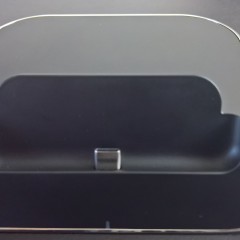
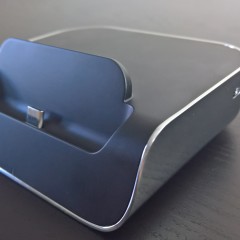
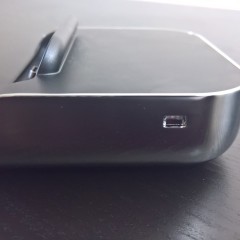
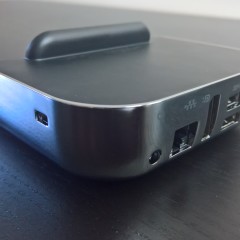
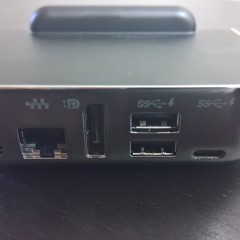
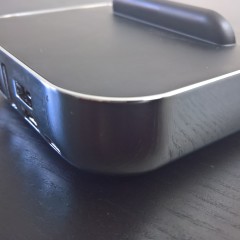
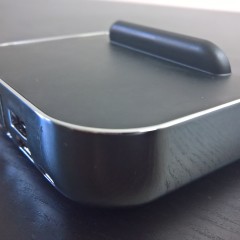
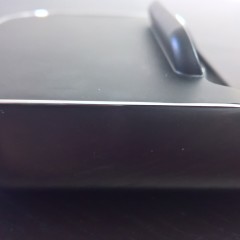
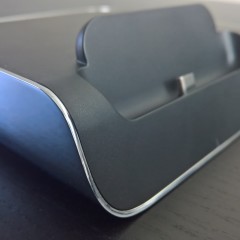
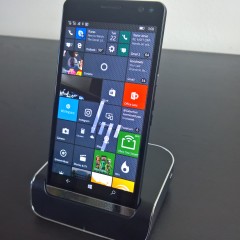
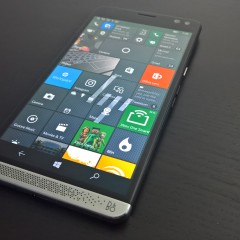
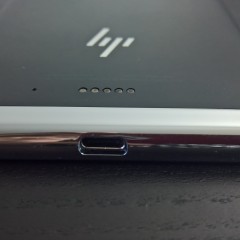
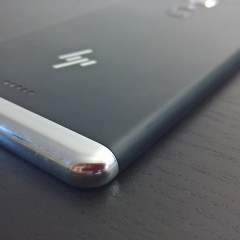
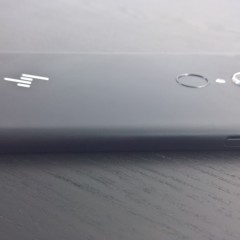
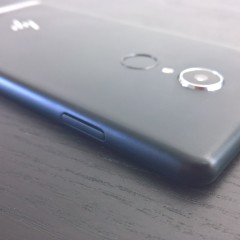
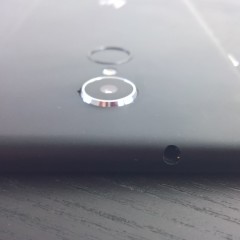
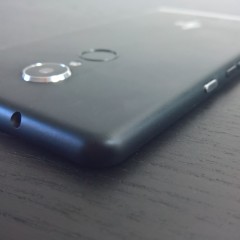
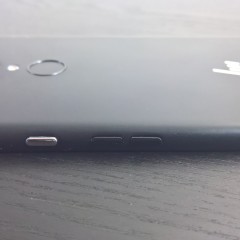
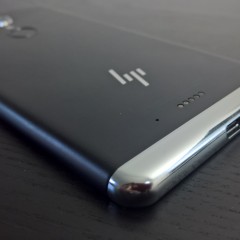
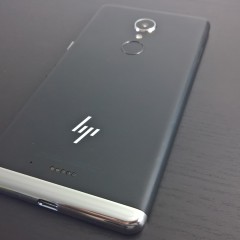
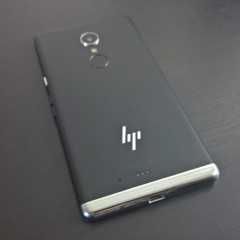
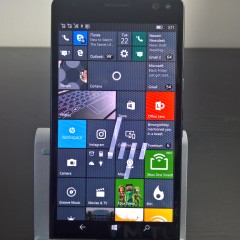
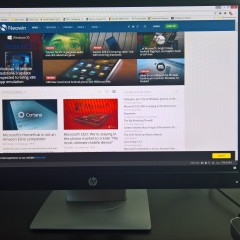
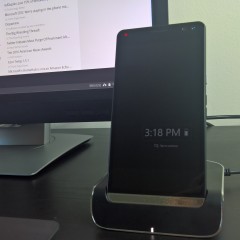
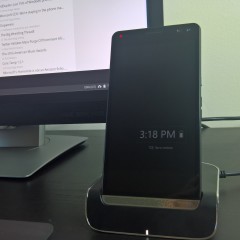
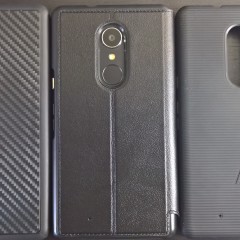
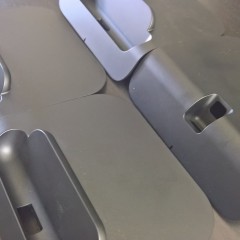
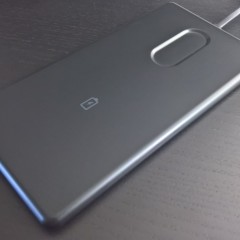
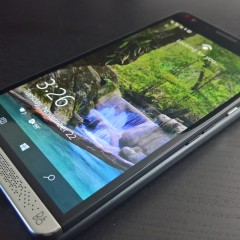
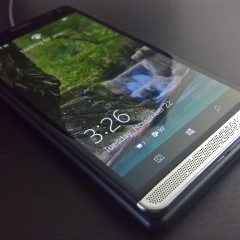
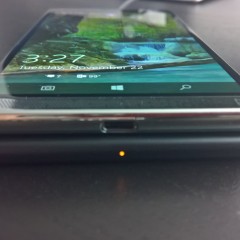









52 Comments - Add comment